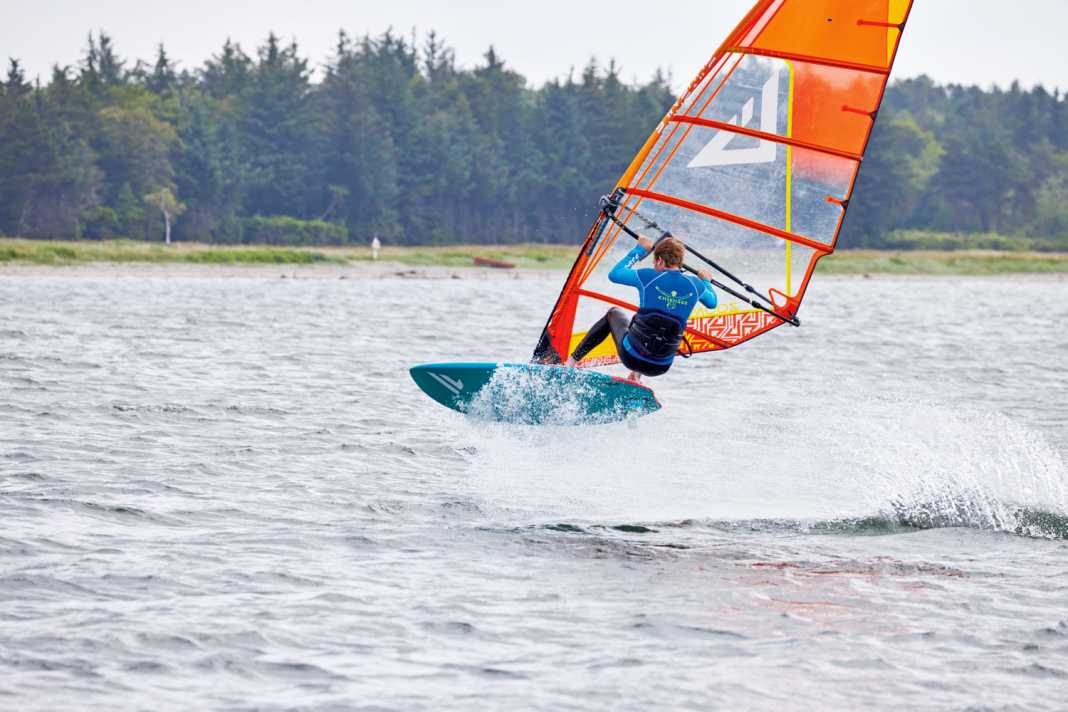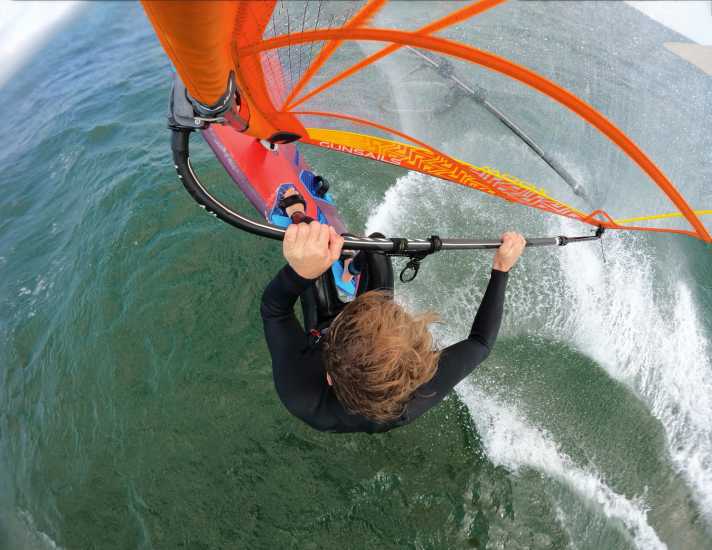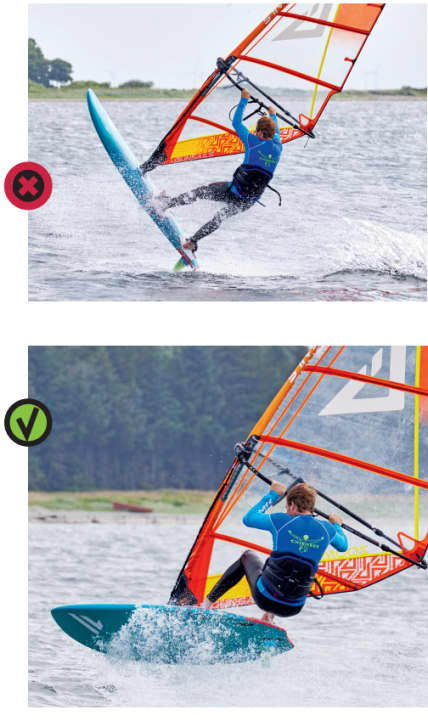





If you want to jump, you don't have to wait for waves - at least not big ones. Because with the right technique, you can fly metres through the air even on small choppy waves. The good thing is: In contrast to other manoeuvres, you can approach your first jumps slowly. The smaller the board and the stronger the wind, the longer the airtime. Boards with 80 to 110 litres are ideal for practising, but you can also get a 140-litre freerider airborne if you choose a sail that is big enough to surf well powered up. Every jump can be divided into several phases - preparation phase, take-off, flight phase and landing. In the following, we will reveal the most important key points and also discuss common mistakes.
Preparation phase
If you want to take off, you also need enough starting speed when windsurfing. So hold tight, build up body tension and accelerate to top speed while you scan the surface of the water for suitable chops.
A small choppy wave helps when jumping off if you manage to approach it at as right an angle as possible. This means that you can either luffing slightly before the jump in order to hit the wave more head-on, or deliberately dropping downwind in order to use the back of the wave as a ramp. Depending on the wind and wave direction, sometimes one makes sense, sometimes the other.
Material tips for jumping
As already mentioned, small, lightweight boards are an advantage; boards in the freemove or freestyle wave class, for example, are ideal. These are often supplied with a multifin set-up, usually as a thruster. For practising jumping, however, the good old singlefin has a clear advantage. Equipped with a single fin, you usually achieve a higher top speed and the fin takes on more pressure when jumping than small thruster fins. So if you have the option of equipping your board with a single fin, you'll make your life - or rather your take-off - easier. Another piece of the puzzle is a slightly higher boom - especially in underpowered conditions. With a high boom, your board will glide more freely and the pull-up on the boom during the flight phase will also be easier - give it a try!
The four sticking points of the Chop Hop
Keep the windward edge up
The board can act as a wing! To do this, actively pull your legs up during the flight phase, with your knees towards the boom. This will also pull up the windward edge and the wind will reach under the board - making the flight phase longer
Pull-up
The arms pull the boom towards the centre of the body during the flight phase, so the sail also acts as a wing
Upright upper body
During the jump, the upper body remains much more upright than, for example, in normal speed riding. This reduces the lateral pressure on the fin during take-off and landing.
Wide handle
To be able to hold the sail fully tight during the flight phase, grip the sail a little wider with your back hand before the jump

The most common mistakes when jumping
If you can't get a proper flight phase despite sufficient wind, there may be several reasons for this.
Too little speed
The search for the right ramp often takes longer than planned. If you glide unhooked for too long, you lose valuable speed. Our tip: only unhook immediately (1-2 seconds) before the jump!
Spinout
When gliding, the upper body hangs far to the outside and the back foot exerts controlled pressure on the fin. Before the jump, the body's centre of gravity must be over the board, otherwise the momentum from the jump will fizzle out and the tail will break away.
Stretched flight phase
The most common mistake when learning the chop hop is certainly a body position that is too stretched out with legs and arms extended (see error image below). This prevents the board and sail from acting as wings. Actively pull your arms and legs towards the centre of your body (at the bottom) and you will fly like a bird!


